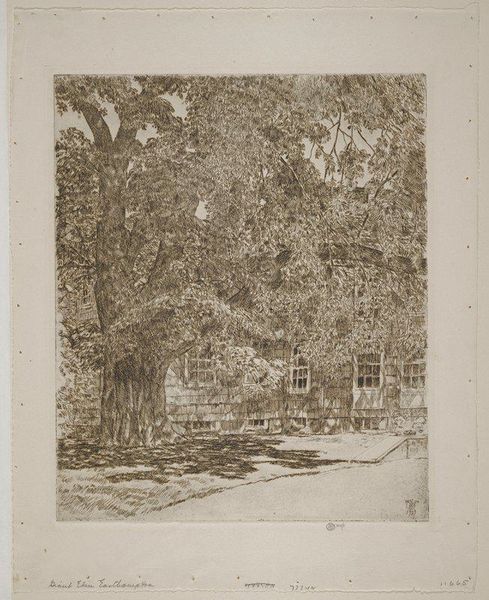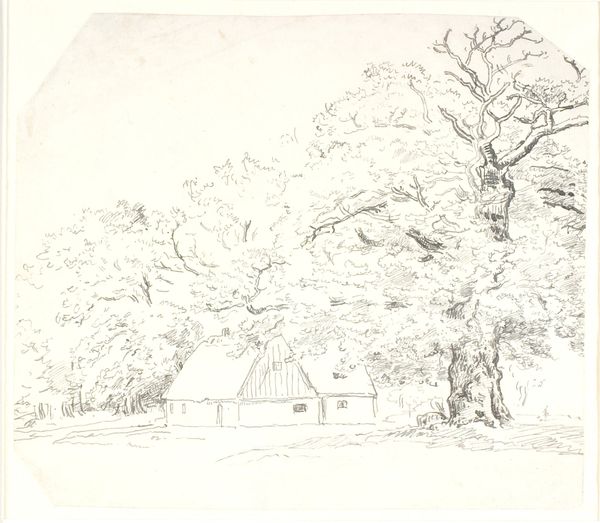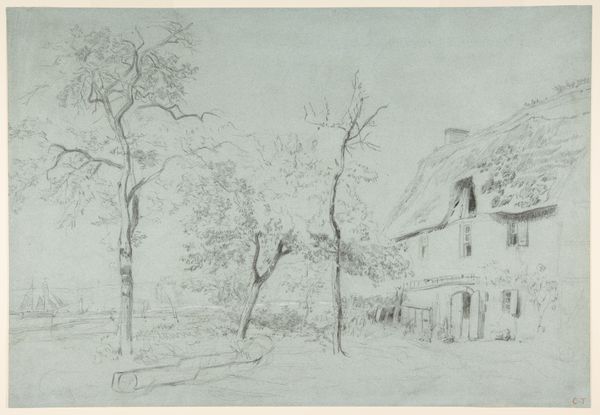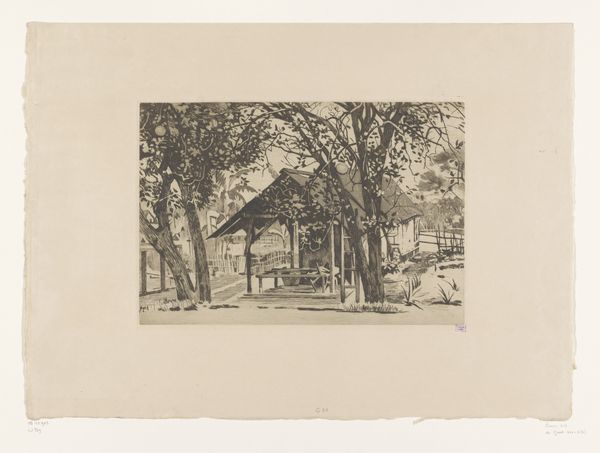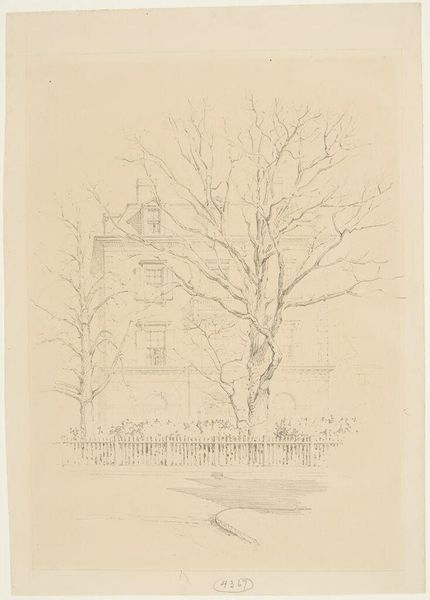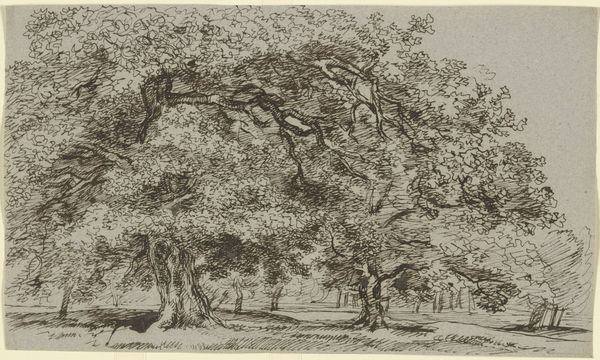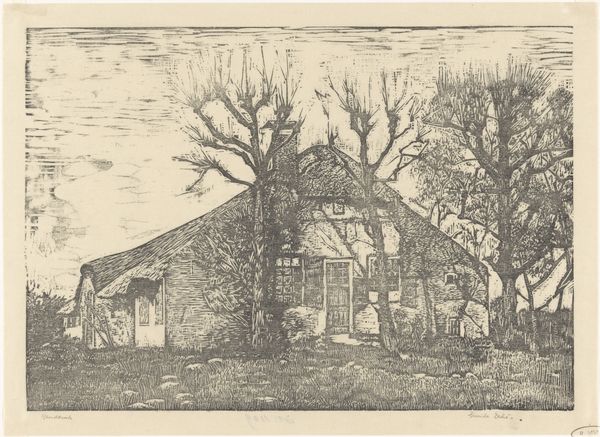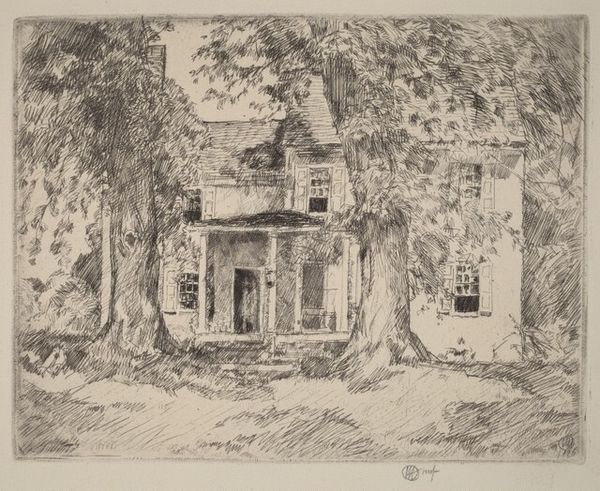
Dimensions: 8 7/8 x 11 3/4 in. (22.54 x 29.85 cm) (plate)11 11/16 x 13 15/16 in. (29.69 x 35.4 cm) (sheet)
Copyright: No Copyright - United States
Curator: This is "Big Horse Chestnut Tree," an etching made around 1928 by Childe Hassam. Editor: It's immediately striking. The intricate detail in the leaves creates this delicate, almost lace-like canopy that dominates the composition. A peaceful, quiet atmosphere seems to emanate from the scene. Curator: Hassam was a master of American Impressionism, and he turned to etching later in his career. This print, created in the latter half of his life, reveals how he took on a somewhat retrospective style. The setting and context are very much New England and, as always with his work, it's quite gendered with respect to his privileged white background. The big house sits passively. The tree has taken over as the signifier of masculine potency. Editor: The way he uses the etching technique to build up textures and shadows is superb. I'm drawn to how he suggests light filtering through the leaves, creating these dappled patterns on the lawn and the building beyond. And look at that lone figure just left of center, at the doorstep, with whom are they aligned? Curator: That’s an interesting angle. The composition draws upon some conservative depictions, yes, but also creates an almost proto-feminist composition where mother nature can take the lead role rather than be subject to men's destructive forces. What do you make of his return to the tree figure here as the active agent? It seems at odds with his early modern street life images where the bourgeoisie are consuming at a massive rate. What happened between the wars that brought him to this pastoral moment? Editor: Perhaps it reflects a broader shift in societal values? The yearning for simpler, pre-industrial scenes became widespread, as industrialization accelerated. An art market emerged that was focused on rural themes, allowing some leeway for nature to come forward. He had the privilege to produce an art about leisure and perhaps this is another, albeit belated, experiment within a career of constant experimentation. Curator: Indeed. Hassam always responded to the art market. And to find something quite delicate here suggests a turn within that milieu, away from its traditional associations. Editor: Ultimately, this etching serves as a lovely snapshot, offering us both an escape and perhaps a gentle nudge toward recognizing our historical and cultural biases.
Comments
No comments
Be the first to comment and join the conversation on the ultimate creative platform.
